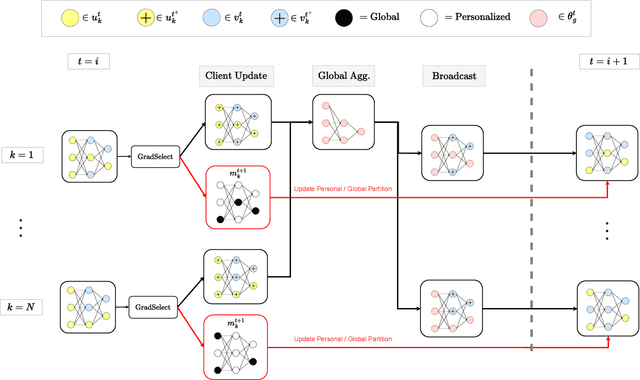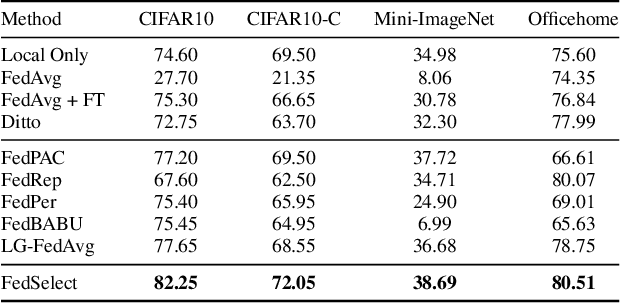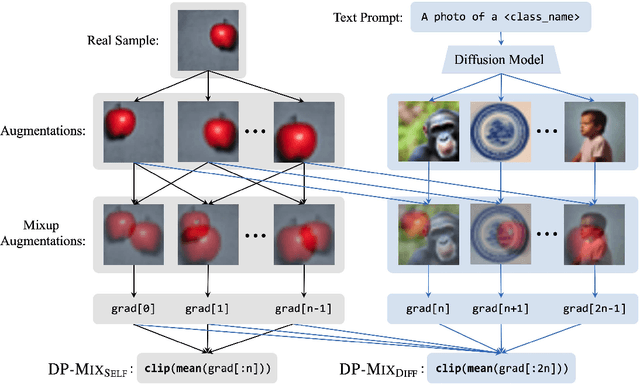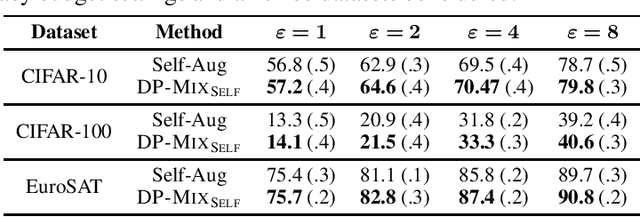Wenxuan Bao
Towards Reliable and Generalizable Differentially Private Machine Learning (Extended Version)
Aug 21, 2025Abstract:There is a flurry of recent research papers proposing novel differentially private machine learning (DPML) techniques. These papers claim to achieve new state-of-the-art (SoTA) results and offer empirical results as validation. However, there is no consensus on which techniques are most effective or if they genuinely meet their stated claims. Complicating matters, heterogeneity in codebases, datasets, methodologies, and model architectures make direct comparisons of different approaches challenging. In this paper, we conduct a reproducibility and replicability (R+R) experiment on 11 different SoTA DPML techniques from the recent research literature. Results of our investigation are varied: while some methods stand up to scrutiny, others falter when tested outside their initial experimental conditions. We also discuss challenges unique to the reproducibility of DPML, including additional randomness due to DP noise, and how to address them. Finally, we derive insights and best practices to obtain scientifically valid and reliable results.
Pave Your Own Path: Graph Gradual Domain Adaptation on Fused Gromov-Wasserstein Geodesics
May 19, 2025Abstract:Graph neural networks, despite their impressive performance, are highly vulnerable to distribution shifts on graphs. Existing graph domain adaptation (graph DA) methods often implicitly assume a \textit{mild} shift between source and target graphs, limiting their applicability to real-world scenarios with \textit{large} shifts. Gradual domain adaptation (GDA) has emerged as a promising approach for addressing large shifts by gradually adapting the source model to the target domain via a path of unlabeled intermediate domains. Existing GDA methods exclusively focus on independent and identically distributed (IID) data with a predefined path, leaving their extension to \textit{non-IID graphs without a given path} an open challenge. To bridge this gap, we present Gadget, the first GDA framework for non-IID graph data. First (\textit{theoretical foundation}), the Fused Gromov-Wasserstein (FGW) distance is adopted as the domain discrepancy for non-IID graphs, based on which, we derive an error bound revealing that the target domain error is proportional to the length of the path. Second (\textit{optimal path}), guided by the error bound, we identify the FGW geodesic as the optimal path, which can be efficiently generated by our proposed algorithm. The generated path can be seamlessly integrated with existing graph DA methods to handle large shifts on graphs, improving state-of-the-art graph DA methods by up to 6.8\% in node classification accuracy on real-world datasets.
Inference Attacks for X-Vector Speaker Anonymization
May 13, 2025Abstract:We revisit the privacy-utility tradeoff of x-vector speaker anonymization. Existing approaches quantify privacy through training complex speaker verification or identification models that are later used as attacks. Instead, we propose a novel inference attack for de-anonymization. Our attack is simple and ML-free yet we show experimentally that it outperforms existing approaches.
Ask, and it shall be given: Turing completeness of prompting
Nov 04, 2024Abstract:Since the success of GPT, large language models (LLMs) have been revolutionizing machine learning and have initiated the so-called LLM prompting paradigm. In the era of LLMs, people train a single general-purpose LLM and provide the LLM with different prompts to perform different tasks. However, such empirical success largely lacks theoretical understanding. Here, we present the first theoretical study on the LLM prompting paradigm to the best of our knowledge. In this work, we show that prompting is in fact Turing-complete: there exists a finite-size Transformer such that for any computable function, there exists a corresponding prompt following which the Transformer computes the function. Furthermore, we show that even though we use only a single finite-size Transformer, it can still achieve nearly the same complexity bounds as that of the class of all unbounded-size Transformers. Overall, our result reveals that prompting can enable a single finite-size Transformer to be efficiently universal, which establishes a theoretical underpinning for prompt engineering in practice.
AdaRC: Mitigating Graph Structure Shifts during Test-Time
Oct 09, 2024



Abstract:Powerful as they are, graph neural networks (GNNs) are known to be vulnerable to distribution shifts. Recently, test-time adaptation (TTA) has attracted attention due to its ability to adapt a pre-trained model to a target domain without re-accessing the source domain. However, existing TTA algorithms are primarily designed for attribute shifts in vision tasks, where samples are independent. These methods perform poorly on graph data that experience structure shifts, where node connectivity differs between source and target graphs. We attribute this performance gap to the distinct impact of node attribute shifts versus graph structure shifts: the latter significantly degrades the quality of node representations and blurs the boundaries between different node categories. To address structure shifts in graphs, we propose AdaRC, an innovative framework designed for effective and efficient adaptation to structure shifts by adjusting the hop-aggregation parameters in GNNs. To enhance the representation quality, we design a prediction-informed clustering loss to encourage the formation of distinct clusters for different node categories. Additionally, AdaRC seamlessly integrates with existing TTA algorithms, allowing it to handle attribute shifts effectively while improving overall performance under combined structure and attribute shifts. We validate the effectiveness of AdaRC on both synthetic and real-world datasets, demonstrating its robustness across various combinations of structure and attribute shifts.
FedSelect: Personalized Federated Learning with Customized Selection of Parameters for Fine-Tuning
Apr 03, 2024



Abstract:Standard federated learning approaches suffer when client data distributions have sufficient heterogeneity. Recent methods addressed the client data heterogeneity issue via personalized federated learning (PFL) - a class of FL algorithms aiming to personalize learned global knowledge to better suit the clients' local data distributions. Existing PFL methods usually decouple global updates in deep neural networks by performing personalization on particular layers (i.e. classifier heads) and global aggregation for the rest of the network. However, preselecting network layers for personalization may result in suboptimal storage of global knowledge. In this work, we propose FedSelect, a novel PFL algorithm inspired by the iterative subnetwork discovery procedure used for the Lottery Ticket Hypothesis. FedSelect incrementally expands subnetworks to personalize client parameters, concurrently conducting global aggregations on the remaining parameters. This approach enables the personalization of both client parameters and subnetwork structure during the training process. Finally, we show that FedSelect outperforms recent state-of-the-art PFL algorithms under challenging client data heterogeneity settings and demonstrates robustness to various real-world distributional shifts. Our code is available at https://github.com/lapisrocks/fedselect.
DP-Mix: Mixup-based Data Augmentation for Differentially Private Learning
Nov 02, 2023



Abstract:Data augmentation techniques, such as simple image transformations and combinations, are highly effective at improving the generalization of computer vision models, especially when training data is limited. However, such techniques are fundamentally incompatible with differentially private learning approaches, due to the latter's built-in assumption that each training image's contribution to the learned model is bounded. In this paper, we investigate why naive applications of multi-sample data augmentation techniques, such as mixup, fail to achieve good performance and propose two novel data augmentation techniques specifically designed for the constraints of differentially private learning. Our first technique, DP-Mix_Self, achieves SoTA classification performance across a range of datasets and settings by performing mixup on self-augmented data. Our second technique, DP-Mix_Diff, further improves performance by incorporating synthetic data from a pre-trained diffusion model into the mixup process. We open-source the code at https://github.com/wenxuan-Bao/DP-Mix.
Adaptive Test-Time Personalization for Federated Learning
Oct 28, 2023



Abstract:Personalized federated learning algorithms have shown promising results in adapting models to various distribution shifts. However, most of these methods require labeled data on testing clients for personalization, which is usually unavailable in real-world scenarios. In this paper, we introduce a novel setting called test-time personalized federated learning (TTPFL), where clients locally adapt a global model in an unsupervised way without relying on any labeled data during test-time. While traditional test-time adaptation (TTA) can be used in this scenario, most of them inherently assume training data come from a single domain, while they come from multiple clients (source domains) with different distributions. Overlooking these domain interrelationships can result in suboptimal generalization. Moreover, most TTA algorithms are designed for a specific kind of distribution shift and lack the flexibility to handle multiple kinds of distribution shifts in FL. In this paper, we find that this lack of flexibility partially results from their pre-defining which modules to adapt in the model. To tackle this challenge, we propose a novel algorithm called ATP to adaptively learns the adaptation rates for each module in the model from distribution shifts among source domains. Theoretical analysis proves the strong generalization of ATP. Extensive experiments demonstrate its superiority in handling various distribution shifts including label shift, image corruptions, and domain shift, outperforming existing TTA methods across multiple datasets and model architectures. Our code is available at https://github.com/baowenxuan/ATP .
Privacy-Preserving Graph Machine Learning from Data to Computation: A Survey
Jul 10, 2023



Abstract:In graph machine learning, data collection, sharing, and analysis often involve multiple parties, each of which may require varying levels of data security and privacy. To this end, preserving privacy is of great importance in protecting sensitive information. In the era of big data, the relationships among data entities have become unprecedentedly complex, and more applications utilize advanced data structures (i.e., graphs) that can support network structures and relevant attribute information. To date, many graph-based AI models have been proposed (e.g., graph neural networks) for various domain tasks, like computer vision and natural language processing. In this paper, we focus on reviewing privacy-preserving techniques of graph machine learning. We systematically review related works from the data to the computational aspects. We first review methods for generating privacy-preserving graph data. Then we describe methods for transmitting privacy-preserved information (e.g., graph model parameters) to realize the optimization-based computation when data sharing among multiple parties is risky or impossible. In addition to discussing relevant theoretical methodology and software tools, we also discuss current challenges and highlight several possible future research opportunities for privacy-preserving graph machine learning. Finally, we envision a unified and comprehensive secure graph machine learning system.
Optimizing the Collaboration Structure in Cross-Silo Federated Learning
Jun 10, 2023Abstract:In federated learning (FL), multiple clients collaborate to train machine learning models together while keeping their data decentralized. Through utilizing more training data, FL suffers from the potential negative transfer problem: the global FL model may even perform worse than the models trained with local data only. In this paper, we propose FedCollab, a novel FL framework that alleviates negative transfer by clustering clients into non-overlapping coalitions based on their distribution distances and data quantities. As a result, each client only collaborates with the clients having similar data distributions, and tends to collaborate with more clients when it has less data. We evaluate our framework with a variety of datasets, models, and types of non-IIDness. Our results demonstrate that FedCollab effectively mitigates negative transfer across a wide range of FL algorithms and consistently outperforms other clustered FL algorithms.
 Add to Chrome
Add to Chrome Add to Firefox
Add to Firefox Add to Edge
Add to Edge